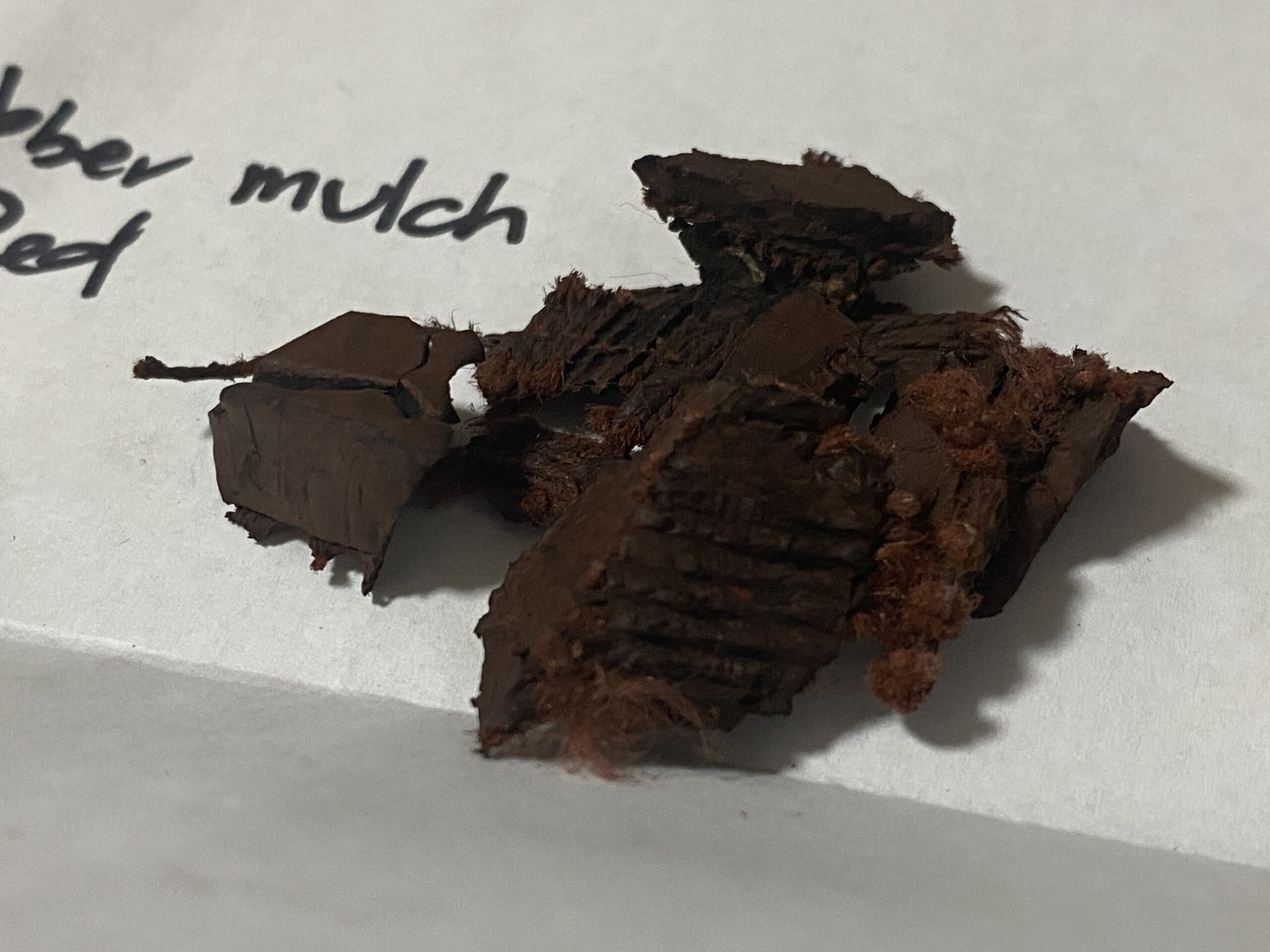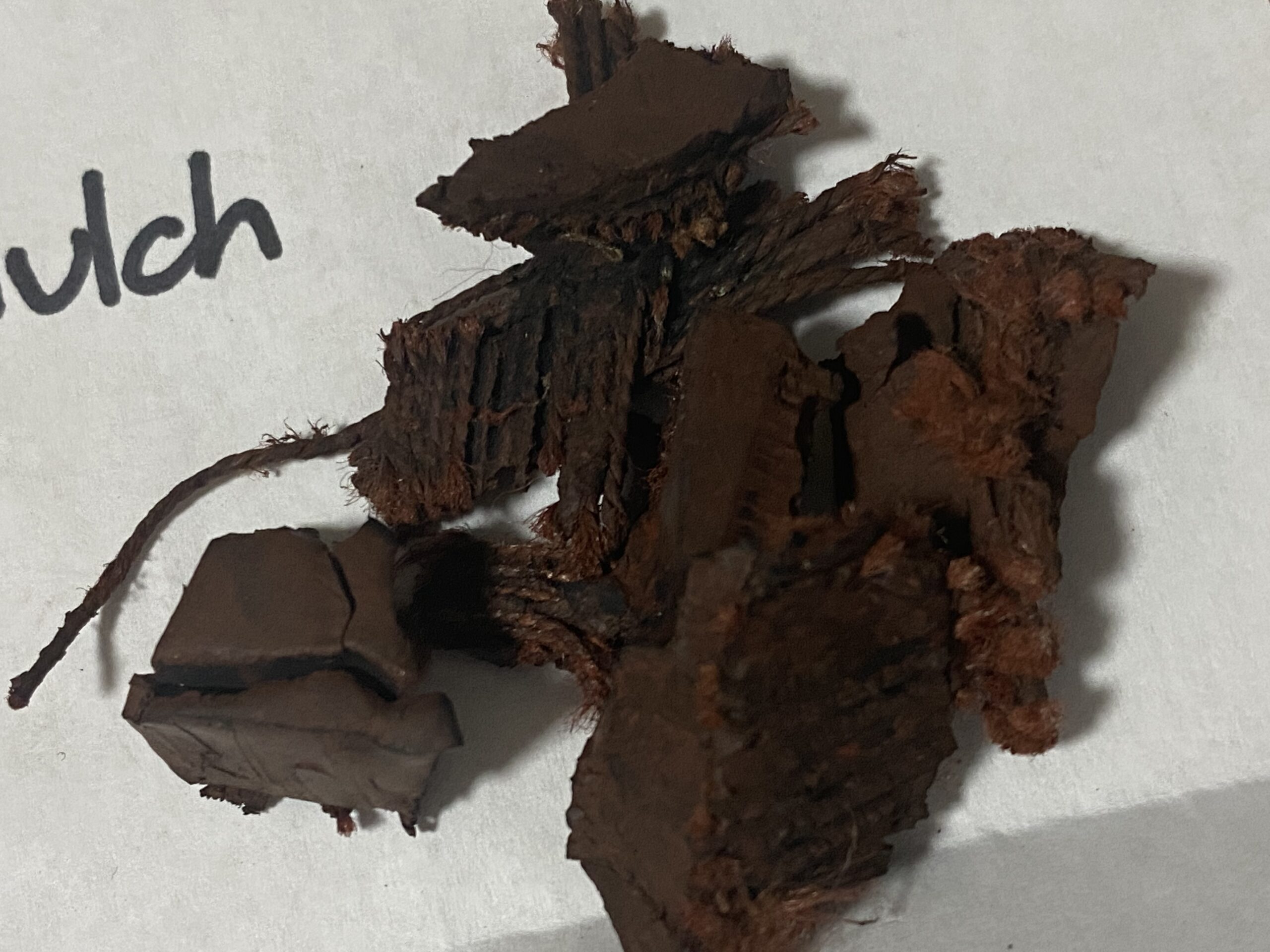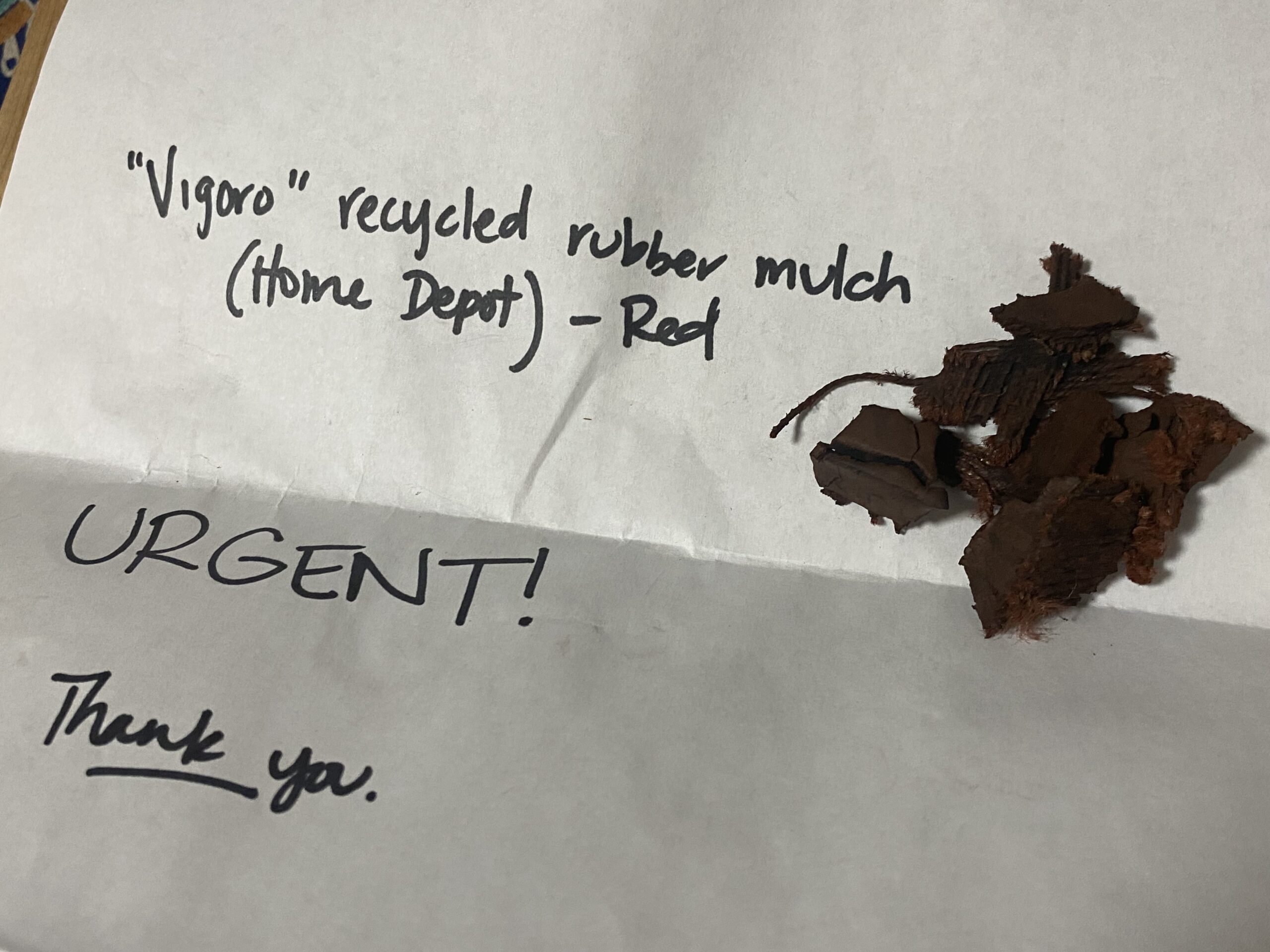“Vigoro” red recycled rubber mulch from Home Depot: positive for trace levels of Arsenic & Lead.
Published: Wednesday – October 19, 2022
XRF test results for “Vigoro” recycled rubber mulch (in Red) –
purchased at Home Depot.
Given this is a recycled product, it is not unusual that different pieces from the sample test positive for different metals, and at varying levels. The concerns for even very low levels of Arsenic and Lead in this application (rubber mulch that may be used as a play surface for children) is the potential for the creation of inhalation hazards, and the potential for hand-to-mouth behavior by children playing on these surfaces. When my kiddos were young, I always avoided playgrounds with this type of covering. Of interest; when I opened the envelope with this small sample inside, the smell was overwhelming!
To clarify, even though the levels found (see details below) for Lead and Arsenic are levels that might be considered low for a toy or other item intended for use by children (especially when looking at the regulatory limits for those types of items), if this product were to create dust (from normal use as intended, if used as ground cover in an outdoor playground where it would be subjected to wear from both friction and weather) – I would anticipate that the dust would end up testing positive for concerning levels for these two highly-poisonous metals found. In my opinion, the creation / sale and distribution of “recycled rubber mulch” is one of the worst crimes of this century – in terms of an industry trying to find a way to dispose of a toxic waste product by packaging and branding it as a consumer product (with an “invented” “practical” use) — similar to the history of what happened with Chlorine, and Fluoride, following World War Two.
One Full Reading, 60-seconds
Repeated multiple times to confirm the results
- Lead (Pb): non-detect
- Cadmium (Cd): non-detect
- Tin (Sn): non-detect
- Mercury (Hg): non-detect
- Selenium (Se): 179 +/- 23 ppm
- Barium (Ba): non-detect
- Arsenic (As): 28 +/- 5 ppm
- Chromium (Cr): non-detect
- Antimony (Sb): non-detect
- Zinc (Zn): 19,100 +/- 200 ppm
- Bromine (Br): 75 +/- 8 ppm
- Iron (Fe): 797 +/- 35 ppm
- No other metals detected in consumer goods mode.
One Full Reading (second sample), 60-seconds
Repeated multiple times to confirm the results
- Lead (Pb): 23 +/- 6 ppm
- Cadmium (Cd): non-detect
- Tin (Sn): non-detect
- Mercury (Hg): non-detect
- Selenium (Se): non-detect
- Barium (Ba): non-detect
- Arsenic (As): non-detect
- Chromium (Cr): non-detect
- Antimony (Sb): non-detect
- Zinc (Zn): 7,523 +/- 81 ppm
- Bromine (Br): 26 +/- 4 ppm
- Iron (Fe): 834 +/- 34 ppm
- No other metals detected in consumer goods mode.
For those new to this website
Tamara Rubin is a Federal-award-winning independent advocate for consumer goods safety and a documentary filmmaker. She is also a mother of Lead-poisoned children. Tamara’s sons were acutely Lead-poisoned in August of 2005. She began testing consumer goods for toxicants in 2009 and was the parent-advocate responsible for finding Lead in the popular fidget spinner toys in 2017. Her work was also responsible for two CPSC product recalls in the summer of 2022, the Jumping Jumperoo recall (June 2022) and the Lead painted NUK baby bottle recall (July 2022) and was featured in an NPR story about Lead in consumer goods in August of 2022. Tamara uses XRF testing (a scientific method used by the U.S. Consumer Product Safety Commission) to test consumer goods for toxicants (specifically heavy metals), including Lead, Cadmium, Mercury, Antimony, and Arsenic. All test results reported on this website are science-based, accurate, and replicable. Items are tested multiple times, to confirm the test results for each component tested and reported on. Please click through to this link to learn more about the testing methodology used for the test results discussed and reported on this website.
Never Miss an Important Article Again!
Join our Email List






Thank you for this information. I have come across some other findings in organic soil bags for vegetables that contain “sewage sludge”. Sewage sludge is toxic to soil and people. I found this information on the United Sludge Free Alliance website (www.usludgefree.org). They provide a list of some branded products that contain these toxins.